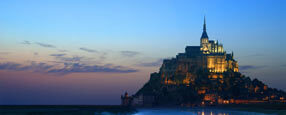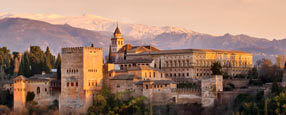CALL US: 1.800.665.3998
The Glory of Greece
Following centuries of occupation by Romans, Arabs, Turks, the Byzantines and Latin invaders to name but a few, the landscape came to bear evidence of foreign influence, as each civilization that crossed the borders into Greece left its mark on Grecian society and countryside. Truly a land of legend.
Duration: 13 days
Starts: Athens
Ends: Athens
Highlights:
For pdf as printable itinerary: Click here
Starts: Athens
Ends: Athens
Highlights:
Athens, Corinth, Mycenae, Sparta, Olympia, Delphi, Paros Island
For pdf as printable itinerary: Click here
ITINERARY IN BRIEF
Day 1: Arrival at the airport of Athens
Arrival at the airport of Athens. Welcome service and transfer to the hotel. Meal Plan: dinner
Day 2: Athens
After breakfast we enjoy a guided tour of Athens, the very heart and soul of Greece. Athens has been very nicely pedestrianized in recent years, and most sites of interest are easily and pleasantly accessed by foot or subway (rather than being trapped in Athens' horrendous traffic). Our guided tour begins at the new Acropolis Museum, located at the foot of the Acropolis. The museum was built to house every artefact found on the rock, from the Greek Bronze Age to Roman and Byzantine Greece. Nearly 4,000 objects are exhibited over an area of 14,000 square metres. From here it is just a brief walk to enter the Acropolis, near the site of the Dionysos Theatre. Constructed in the 6th century BC, it is one of the world's oldest theatres and the place where the great works of Aeschylus, Sophocles, Euripides and Aristophanes were first performed. We will also see a more recent theatre, the Odeon of Herod Atticus from the second century AD, which is still used for concerts and performances. Ascending to the top of the Acropolis, we will see magnificent buildings dating from the 5th century BC, the Golden Age of Athens. On the highest point on the Acropolis is the Parthenon, often considered the finest monument to Greek civilization. The temple was dedicated to Athena "Parthenos," the virgin and patron goddess of the city. After our Acropolis tour, we'll descend and enter the Ancient Agora located adjacent to the Plaka, the old town of Athens. Among the numerous sights in this archaeological park are the well-preserved Temple of Hephaistos and the landmark Roman era Tower of the Winds. Meal Plan: breakfast, lunch, dinner
Day 3: Drive to Corinth
We board our coach to drive to ancient Corinth for a brief visit. Back in ancient times Corinth was one of the three major powers in Greece, and took part in all the battles against the Persians. It was from one of the richest cities and this is quite evident by its remains, including the huge Agora (market place) and Apollo's Temple (6th century BC). We continue to Mycenae. The citadel occupies the triangular summit of a low hill between two gorges. The Mycenaeans excelled in this style of building using large, unworked stones. These massive fortifications were begun in the 14th century, followed by Tiryns and Dendra, Argos and Athens, as well as a host of subsidiary forts and eventually, a huge wall across the Corinthian isthmus. The famous Lion Gate, and similar constructions at Gla and Tiryns, were built in the 13th century BC. Here we will see vestiges of a kingdom that, for 400 years (1600-1200 BC), was the most powerful in Greece. We enter through the Lion Gate and see the Great Court where Agamemnon is believed to have been murdered in one of the chambers. Later we travel to Epidaurus, a sanctuary of sklepios, the God of Medicine. The sanctuaries of Asklepios, the healer god, were as much sanatoria, health farms or spas, as places of worship. This was the most prestigious centre of the cult in the Classical period and received a galaxy of splendid buildings spanning the whole of the 4th century BC.
Day 4: Departure for Kalamata
Breakfast. Departure for Kalamata. On the way we visit the ancient city of Sparta and Mystras Byzantine Castle.In Sparta, you may choose to visit the archaeological remains of ancient Sparta, including the 2nd century BC theatre, the site's most discernible ruin. There is not much remaining of this once mighty civilization, but those interested in Spartan history may find the visit rewarding. Overnight in Kalamata. Meal Plan: breakfast, lunch, dinner
Day 5: Kalamata city and Ancient Messini site
Breakfast. Visits of Kalamata city and Ancient Messini site. We continue to Olympia for overnight. Meal Plan: breakfast, lunch, dinner
Day 6: Visit of the site and museum of Olympia
Breakfast. Visit of the site and museum of Olympia. Tour of the site of ancient Olympia and the excellent on-site museum. This was a place in ancient Greece where rival states shed their protective armour and congregated in peace to enjoy the ancient games and make offerings to the Gods. The temple of Zeus once dominated the entire complex and housed the 13-metre (43 feet) statue of Zeus, considered by the Greeks to be one of the original Seven Wonders of the Ancient World. We will also see the Stadium as well as the Temple of Hera, which is the site's most intact structure. This is the oldest structure in the precinct, originally dedicated to Zeus as well as Hera, and gradually rebuilt from wood into stone. The walls were of mud-brick with a tiled roof. The games, which were the most prestigious athletic event in Greece, were held in conjunction with a festival to Olympian Zeus. Three heralds were sent to all the Greek states to announce their date and declare the universal truce, under which all hostilities were suspended for one week. The games were brought to an end in AD 393, under an edict of the Emperor Theodosius that banned all pagan festivals. The temples were destroyed in AD 426. Overnight in Dehphi. Meal Plan: breakfast, lunch, dinner
Day 7: Delphi
Breakfast. In Delphi, we will have a guided tour of this spectacular site and its excellent museum. According to mythology, Zeus released two eagles at opposite ends of the world and they came to rest at Delphi, the "navel of the world." Delphi is known as the centre of worship for the God Apollo, son of Zeus who embodied moral discipline and spiritual clarity. But even before the area was associated with Apollo there were other deities worshipped here including the earth goddess Gea, Themis, Demeter and Poseidon, the well-known god of the sea. By the end of the Mycenaean period, Apollo had displaced these other deities and became the guardian of the oracle. Delphi was the site of the Delphic oracle, most important oracle in the classical Greek world, and it was a major site for the worship of the god Apollo. His sacred precinct in Delphi was a Pan-Hellenic sanctuary, where every four years athletes from all over the Greek world competed in the Pythian Games, the precursor to the Olympic Games. Departure for Kalambaka. Our route takes us through the central plains, a rich agricultural land referred to as the "bread basket" of Greece. Overnight in Kalambaka. Meal Plan: breakfast, lunch, dinner
Day 8: Monasteries of Meteora
Breakfast. This morning we have a panoramic drive around the Monasteries of Meteora, built upon rocks that rise vertically from the plains below. These "Rocks of the Air" are visible for miles around and are crowned with old monasteries that cling to their summits. The Meteora is one of the largest and most important complexes of Eastern Orthodox monasteries and is second only to Mount Athos. The monasteries are built on natural sandstone rock pillars, at the northwestern edge of the Plain of Thessaly. This morning we visit several monasteries, including the Metamorphosis (Grand Meteora), built on the highest rock at 613 m (2,030 ft) above sea level. Its striking series of frescoes depict the persecution of Christians by the Romans. Later today we return by road to Athens, visiting Thermopylae, where the great historical battle between the Spartan King Leonidas, the ultimate soldier-king, and the huge army of Persians took place. Overnight in Athens. Meal Plan: breakfast, lunch, dinner
Day 9: Ferry to Paros island
After breakfast transfer to the port for embarkation on the ferry to Paros Island. Arrival in Paros and transfer to the hotel. Meal Plan: breakfast, lunch, dinner
Day 10: Paros island
Day of excursion around the island to see the marble quarries, the Byzantine church of Panagia Ekatontapiliani, the church with 100 doors. We also visit the old Venetian Castle and the highest village on the island which is called Lefkes. We also go to the small fishing village of Piso Livadi and to the picturesque famous small village of Naoussa. Meal Plan: breakfast, lunch, dinner
Day 11: Antiparos
Breakfast. One-day excursion to either island of Antiparos. Antiparos is only 10 minutes by boat from Paros where they can swim and visit the cave with stalactites. Return to our hotel in Paros. Meal Plan: breakfast, lunch, dinner
Day 12: Piraeus
After breakfast transfer to the port for embarkation on the ferry to Piraeus. Arrive in Piraeus and transfer to the hotel in Athens for overnight. Meal Plan: breakfast, lunch, dinner
Day 13: Departure from Athens
After breakfast, transfer to the airport for your departure flight. Meal Plan: breakfast
INCLUSIONS
What's included on this tour?
- International airfare from North America to Athens and back with all taxes.
- Ferry tickets (economy class-regular ferry) for the itinerary Piraeus - Paros - Piraeus.
- Packed lunches on 11 days and dinner daily.
- Olive oil factory visit with entrance ticket . Also, entrances and visits to all other sites mentioned in the tour program.
LOOKING FOR INSPIRATION?







